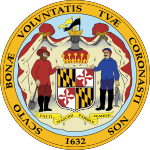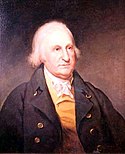
The 1788–89 United States presidential election was the first quadrennial presidential election. It was held from Monday, December 15, 1788, to Wednesday, January 7, 1789, under the new Constitution ratified that same year. George Washington was unanimously elected for the first of his two terms as president and John Adams became the first vice president. This was the only U.S. presidential election that spanned two calendar years without a contingent election and the first national presidential election in American history.

The 1792 United States presidential election was the second quadrennial presidential election. It was held from Friday, November 2, to Wednesday, December 5, 1792. Incumbent President George Washington was elected to a second term by a unanimous vote in the electoral college, while John Adams was re-elected as vice president. Washington was essentially unopposed, but Adams faced a competitive re-election against Governor George Clinton of New York.

The 1796 United States presidential election was the third quadrennial presidential election of the United States. It was held from Friday, November 4 to Wednesday, December 7, 1796. It was the first contested American presidential election, the first presidential election in which political parties played a dominant role, and the only presidential election in which a president and vice president were elected from opposing tickets. Incumbent vice president John Adams of the Federalist Party defeated former secretary of state Thomas Jefferson of the Democratic-Republican Party.

The 1816 United States presidential election was the eighth quadrennial presidential election. It was held from November 1 to December 4, 1816. In the first election following the end of the War of 1812, Democratic-Republican candidate James Monroe defeated Federalist Rufus King. The election was the last in which the Federalist Party fielded a presidential candidate.
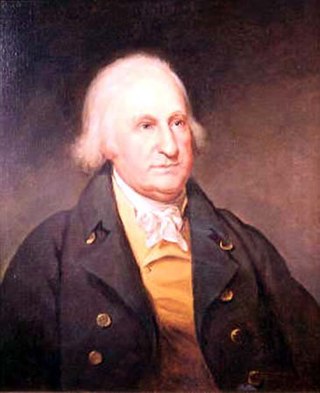
John Eager Howard was an American soldier and politician from Maryland. He was elected as governor of the state in 1788, and served three one-year terms. He also was elected to the Continental Congress, the Congress of the Confederation, the United States Senate, and the Maryland Senate. In the 1816 presidential election, Howard received 22 electoral votes for vice president on the Federalist Party ticket with Rufus King; the ticket lost to Democratic-Republicans James Monroe and Daniel D. Tompkins in a landslide.

The 1788–89 United States House of Representatives elections were the first U.S. House of Representatives elections following the adoption of the Constitution of the United States. Each state set its own date for its congressional elections, ranging from November 24, 1788, to March 5, 1789, before or after the first session of the 1st United States Congress convened on March 4, 1789. They coincided with the election of George Washington as the first president of the United States.

The 1802–03 United States Senate elections were held on various dates in various states. As these U.S. Senate elections were prior to the ratification of the Seventeenth Amendment in 1913, senators were chosen by state legislatures. Senators were elected over a wide range of time throughout 1802 and 1803, and a seat may have been filled months late or remained vacant due to legislative deadlock. In these elections, terms were up for the senators in Class 1.

The 1796–97 United States Senate elections were held on various dates in various states. As these U.S. Senate elections were prior to the ratification of the Seventeenth Amendment in 1913, senators were chosen by state legislatures. Senators were elected over a wide range of time throughout 1796 and 1797, and a seat may have been filled months late or remained vacant due to legislative deadlock. In these elections, terms were up for the senators in Class 1.

The 1788–1789 United States Senate elections were the first U.S. Senate elections following the adoption of the Constitution of the United States. They coincided with the election of George Washington as the first president of the United States. As these elections were prior to the ratification of the Seventeenth Amendment in 1913, senators were chosen by state legislatures.
Elections to the Massachusetts Senate were held during 1788 to elect 40 State Senators. Candidates were elected at the county level, with some counties electing multiple Senators.

The 1789 Maryland gubernatorial election was held on 16 November 1789 in order to elect the Governor of Maryland. Incumbent Federalist Governor John Eager Howard was easily re-elected by the Maryland General Assembly as he ran unopposed. The exact results of this election are unknown.

The 1790 Maryland gubernatorial election was held on 8 November 1790 in order to elect the Governor of Maryland. Incumbent Federalist Governor John Eager Howard was easily re-elected by the Maryland General Assembly as he ran unopposed. The exact results of this election are unknown.
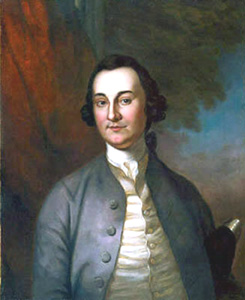
The 1791 Maryland gubernatorial election was held on 14 November 1791 in order to elect the Governor of Maryland. Federalist candidate and former member of the Maryland Senate George Plater was easily elected by the Maryland General Assembly as he ran unopposed. The exact results of this election are unknown.

The 1792 Maryland gubernatorial election was held on 3 April 1792 in order to elect the Governor of Maryland, following the death of Governor George Plater in office. Federalist candidate and former Governor Thomas Sim Lee was elected by the Maryland General Assembly against other candidates to complete the term of late Governor Plater, before winning a full term in his own right on 12 November 1792. The exact results of these elections are unknown.

The 1794 Maryland gubernatorial election was held on 17 November 1794 in order to elect the Governor of Maryland. Federalist candidate and former member of the Maryland House of Delegates John Hoskins Stone was elected by the Maryland General Assembly against his opponent, fellow Federalist candidate Levin Winder. The exact results of this election are unknown.

The 1795 Maryland gubernatorial election was held on 9 November 1795 in order to elect the Governor of Maryland. Incumbent Federalist Governor John Hoskins Stone was easily re-elected by the Maryland General Assembly as he ran unopposed. The exact results of this election are unknown.

The 1796 Maryland gubernatorial election was held on 15 November 1796 in order to elect the Governor of Maryland. Incumbent Federalist Governor John Hoskins Stone was easily re-elected by the Maryland General Assembly as he ran unopposed. The exact results of this election are unknown.

The 1797 Maryland gubernatorial election was held on 13 November 1797 in order to elect the Governor of Maryland. Federalist candidate and incumbent United States Senator John Henry was easily elected by the Maryland General Assembly as he ran unopposed. The exact results of this election are unknown.
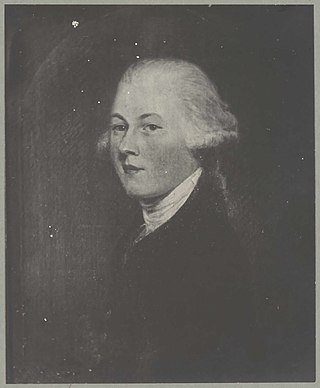
The 1798 Maryland gubernatorial election was held on 14 November 1798 in order to elect the Governor of Maryland. Federalist candidate Benjamin Ogle was elected by the Maryland General Assembly against his opponent, fellow Federalist candidate Nicholas Carroll. The exact results of this election are unknown.

The 1800 Maryland gubernatorial election was held on 10 November 1800 in order to elect the Governor of Maryland. Incumbent Federalist Governor Benjamin Ogle was easily re-elected by the Maryland General Assembly as he ran unopposed. The exact results of this election are unknown.
